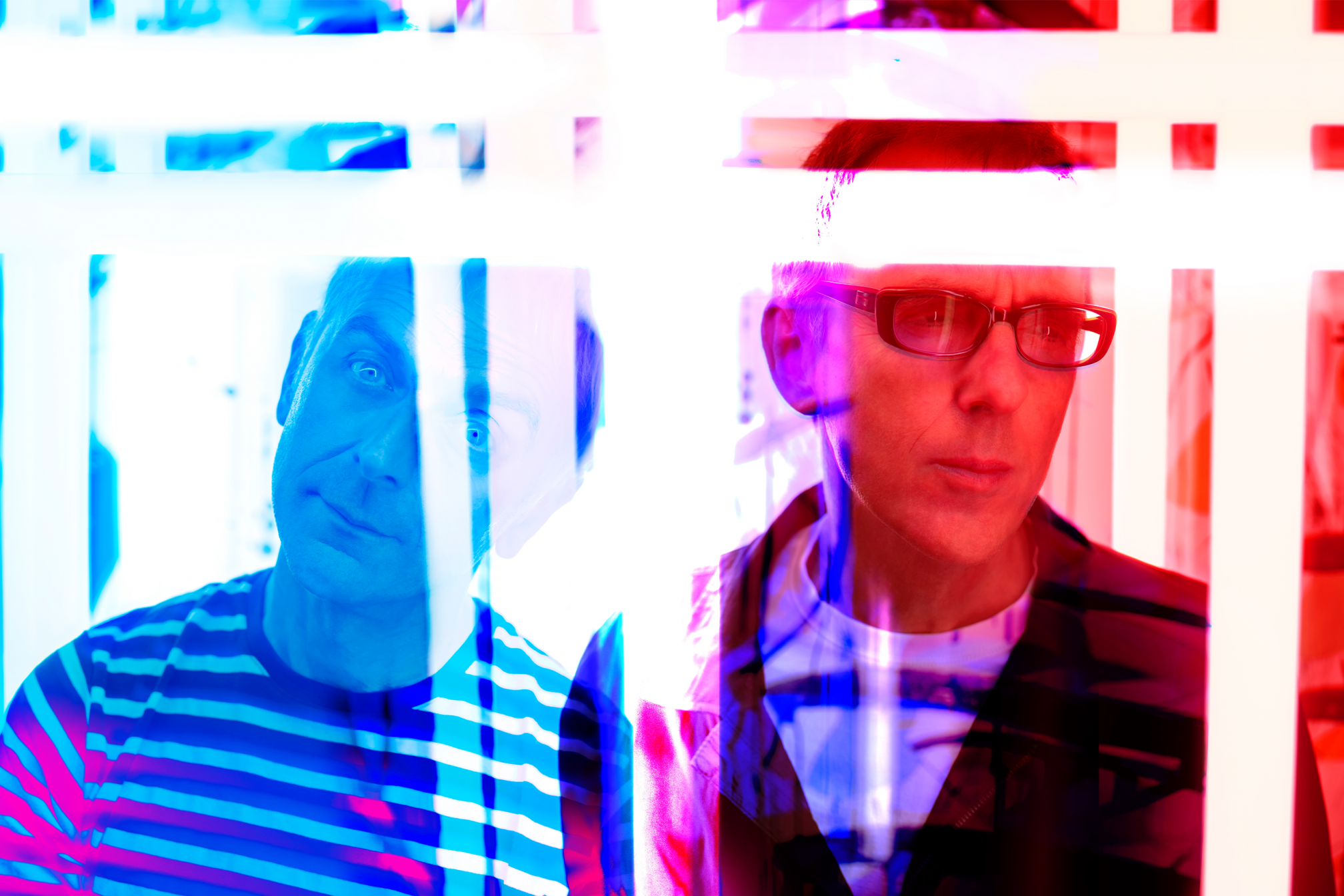 Features
Features
Underworld, the rave pioneers relentlessly pushing creative limits
We chat with the legendary UK-duo about their groundbreaking year-long studio session and weekly release project
Karl Hyde and Rick Smith, collectively adored as Underworld, are the indisputable champions of the rave... and have been for nearly the past three decades. With their time-honored precision and dedication to a sound entirely their own, this duo of dancefloor dynamism has continued to innovate and redefine genres within genres - intertwining instrumental riffs with heavy synth progressions, and delicate drum patterns with lyrical tact and vocal tenacity. While some may assume a softer approach to the creative process would suit such established pillars of the club, Karl and Rick are actually ramping up their productions and tour schedules, continuing to ooze their original sounds from the studio at an unprecedented pace.
After a massive release schedule for 52-consecutive weeks, Underworld’s 'DRIFT Series 1’ has just reached its conclusion. For the past year, each week meant a freshly composed track direct from the Underworld dungeon. These songs were often polished in the dwindling hours before the weekly deadline, as their compositions tended to built upon the themes and tones set by the preceding week. Karl and Rick also collaborated with their long-standing visual partner, Tomato’s Simon Taylor, to compose a unique video set to the score of each track, also operating within the same tight release schedule. The results, both auditory and visual, have been absolutely stunning. This cumulative anthology presented with 'DRIFT Series 1' is their tenth studio album, which they’ve produced and released in an undeniably ground-breaking fashion - inviting listeners into their private sessions with unabashed enthusiasm.
Despite the tight turnaround, this self-imposed time constraint actually fostered a sense of stimulation and momentum toward song-writing, which they hadn't felt so fully "since releasing 12" vinyl pressings in the 90's." Even so, while this latest record is certainly raw and reminiscent of a free-flowing jam session at times, what’s particularly commendable is how beautifully produced each track is, with a discernible intention toward the arrangement of layers to establish powerful, thematic settings. Each week brought a new flavor to the listener, serving to continually stoke the fire of their unbridled musicianship, driving the group toward the seemingly infinite evolution of their legacy. This achievement is a testament to the notion that process is always greater than outcome.
Mixmag was mighty fortunate to catch up with Underworld to discuss this latest project, momentum for the future, and their thoughts on an impending ‘Series 2’ of the DRIFT project.
Read more here: Underworld announce new album and biggest live shows to date
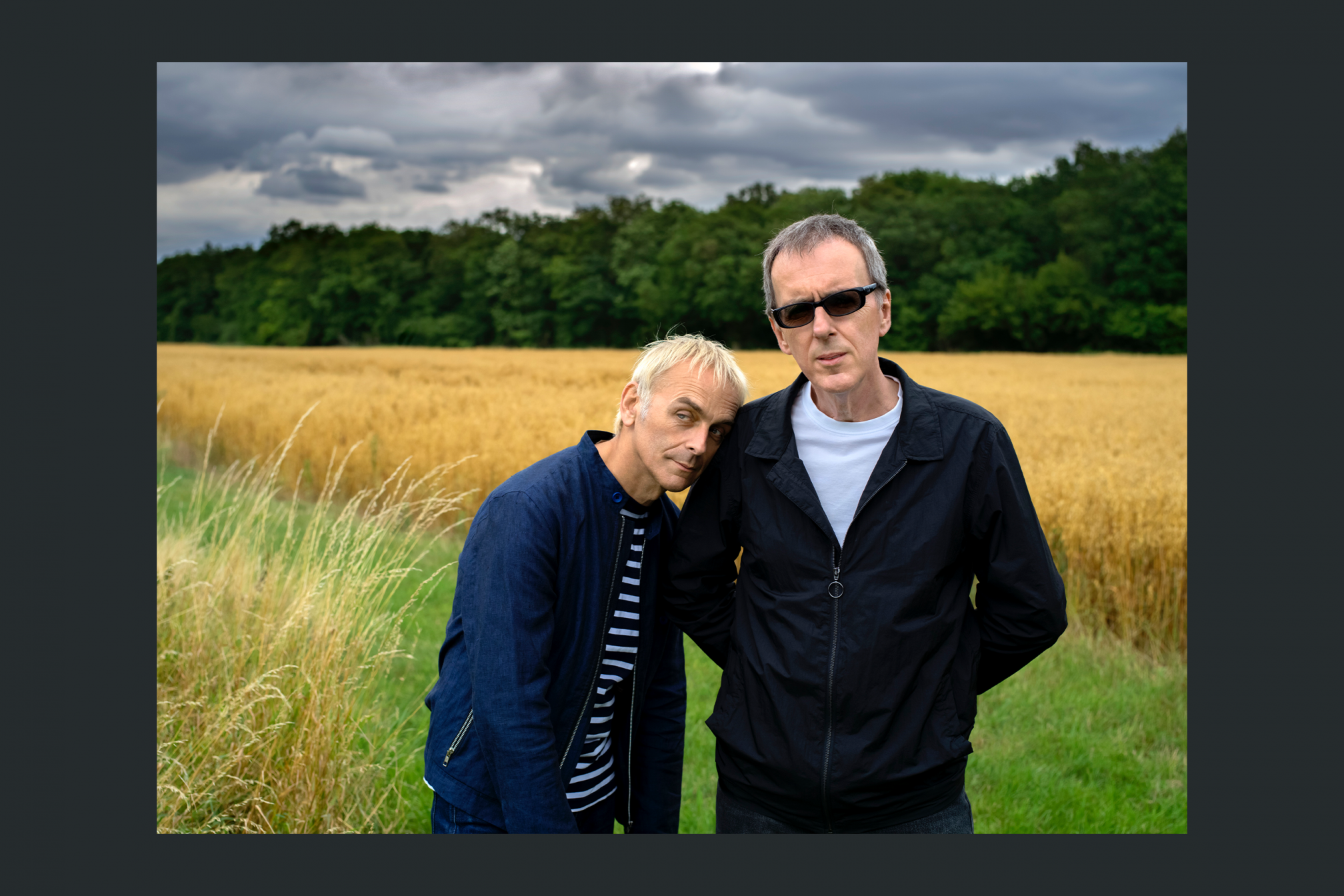
Mixmag - Being just a few days from DRIFT’s 1-year anniversary, in retrospect - What’s been the most revealing part of this year-long process, regarding your creativity and continued growth as artists?
Karl - We’re still alive!
Rick - Hah, yea that’s one aspect. We’re still alive. It’s been extraordinarily stimulating. It’s made us talk, it’s made us work, it’s made us write, it’s made us experiment more. It’s made us play more. That’s the good stuff. It’s also been a lot of pressure, very long hours... But somehow, that most often turns into good stuff as well. Not always, of course, but that’s been the case here. It’s funny you ask, because I woke up this morning and it’s the first time the gravity of this date has come up. The 52 weeks... We fulfilled our promise - and it made me smile!
Karl - My thoughts are quite concurrent with Rick’s. It’s been fantastically stimulating and inspiring - to be working closer with Rick, to have a closer and more intense dialogue, to follow Ricks intents, and they’re always good intents. To have a project which, as Rick saw it at the beginning, releases our potential and our skills. It reflects the breadth of Underworld’s catalogue, or landscape. This is built out of the World of Underworld, and the World of Underworld is incredibly broad and eclectic. Everything from film music, to the opening ceremony of the Olympics, to techno, to North African blues... It’s all of those things, and a project like DRIFT kind of demands that you open up to those possibilities as artists.
Rick - It also demands, whether you like it or not, to release new material on a particular Wednesday night at two in the morning.
Watch more here: Underworld, the evolution of...
A core tenet of DRIFT is a free-form approach to music production, that builds upon itself sans expectations. But has any aspect of the recording and release process surprised you, or ended up somewhere drastically different than where it may have been conceived as going initially?
Karl - Constantly… because one week, Rick might pull the release days before it’s about to come out. Then, the challenge is to find the response. There’s lots of problem solving that goes on, and having worked together in the past, we have time to bring our individual and collective skills together. So we’re constantly surprising each other in rapid succession. It’s not like there’s a surprise… and then a few months until we find another little surprise. It’s often that every week there’s a surprise, in which we surprise each other as to where we’ve taken something individually. Or a response we’ve made to something, taking a track off in a direction we couldn’t have imagined.
The collaborations with other artists we’ve engaged in also introduced an entirely new channel for surprises. They’ve each had a massive impact on this project and our processes as well.
Rick - One moment that sticks out… there were loads of moments and surprises. But first responses, really. Having to put something out every Thursday has obviously been a unique kind of pressure. But there’s also something really empowering about it. Demanding... exciting. You know? You’re moving, not standing still. You’re not thinking about taking so much time to think about where you’re going next. So it makes for a different type of work. The thing is, over a period of time, I'd continually put more work into the releases as they progress for the finished album.
Karl - Agreed, it’s all in the process and the fact that it just keeps going. It just keeps surprising us. It’s been really important. The only thing you could liken it to in our career experience is when you work on the score for a play or a film, where you basically have 40 minutes to write, mix and master and then return the new track. Or with a film, they send you a scene and they say, “We need the new score by return, immediately” - and you’ve just got to do it.
Rick often pointed out that was a privileged way to work - where you were working to someone else’s brief, or you were working to a picture, or you were working to a script with a defined, very, very short turn around.
But with an album, it’s like “Hey, how long is a piece of string?” And that’s not necessarily a good thing.
Rick - Hah, well how long is a piece of string?
Karl - Well, have you seen the string I have in my pocket?
Rick - Who is a boiled egg?!
Karl - Indeed! And so again, a part of Rick’s vision for this project was to introduce some of that time constraint and the necessity to use our skills to solve a problem, the problem being that you’ve got to come up with something in 7 days, or if Rick changes what comes out, it could be within the next 24 hours. Which in film and theater terms, it’s a very long time, to take 24 hours to create a piece of music.
Read more here: Cocoon invites Underworld to Ibiza for 20th anniversary party
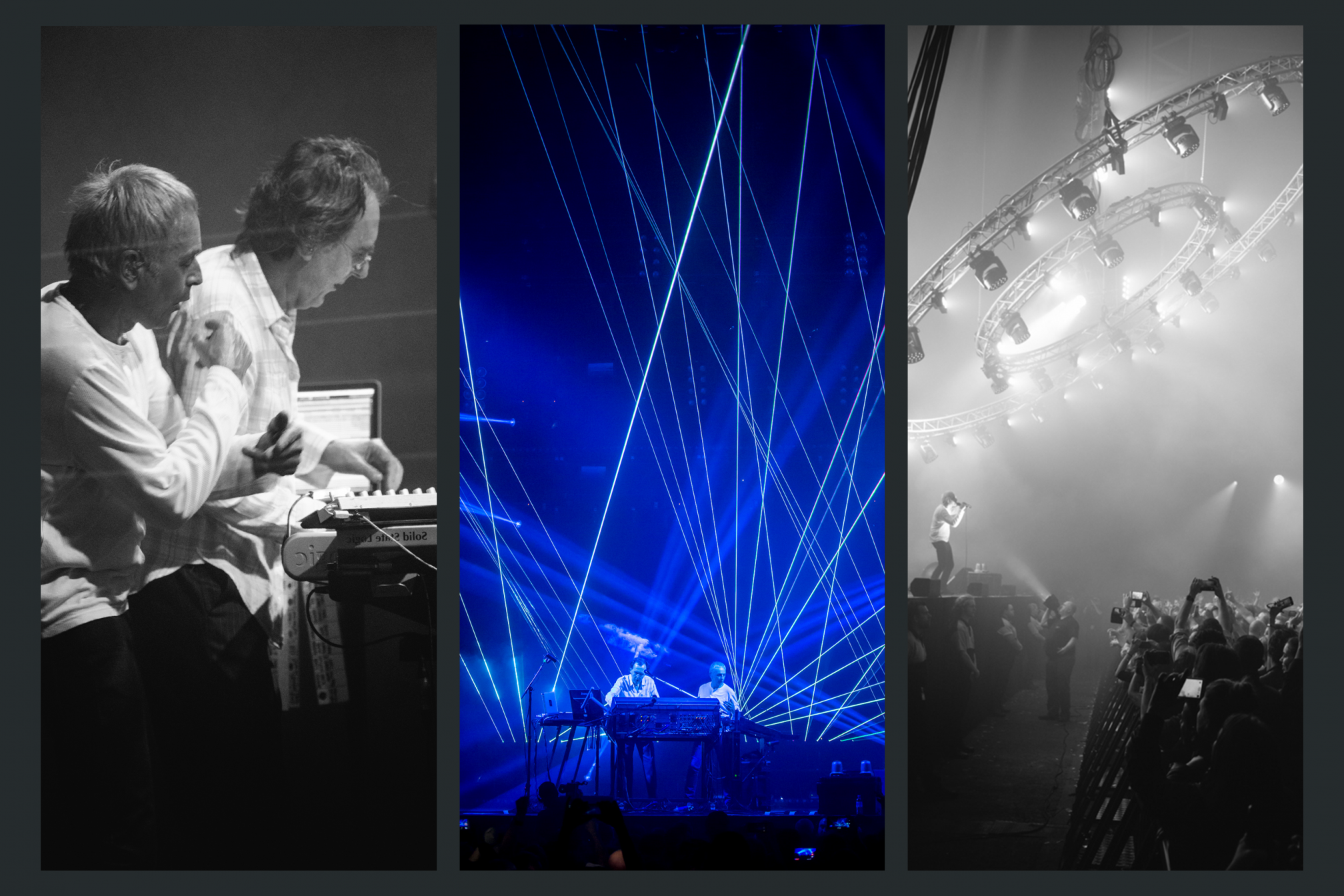
Definitely understandable, that the time constraint was as much a challenge as it was a form of encouragement. But has there been something strictly challenging, that will directly inform your process going into ‘Series 2’?
Karl - One of the things that has been challenging, is to release something every week. Having done that, it’s not necessarily a good idea for ‘Series 2’. Not in the same way. We can be releasing things, but not to give us the same time constraint.
One thing that ‘Series 1’ of DRIFT didn’t allow us to do, weirdly... is drift. You can’t wander off to a gallery or a gig, or sit on a hill or in a cafe all day… and just see what happens, you know? So that initial idea of DRIFT, to wander without purpose, to see what you encounter, became less and less possible.
Rick - It’s because we want to do too much! And we do, do too much. So being professional musicians and DJs, although they’re the same thing, really - the world will understand. You have to do so much, to put food on the table and remain electric in the studio.
Karl - Your imagination cuts loose and all of a sudden you’re goin, “Yea, I want to do that! Yea i want to do that!” And before you know it, you’ve signed up for a bit too much.
Rick - We made promises to do things - like put music and film out every week for 52 weeks. Then you realize, “Oh yea, we’re also booked to do shows!” You can’t always assume you’ll just turn up and do what you did last time. It’s not right. And collaborations take a lot of time as well.
We’re also a very small team; a tight unit. So communicating and taking time to talk to each other was really important with DRIFT. Having the space to speak, say what’s on your mind, or just talk about the color blue, was extremely important to DRIFT. It was relentless, because we have to engage with so many things, trying to put out original music and a piece of film every week. It was quite a challenge for us.
Karl - There’s no expansion space, on something like that. You know, you can’t get ill. You can’t go on holiday. You don’t have weekends… And we’ve done that, so now let’s build a bit of that into ['Series 2'] and see what happens.
Rick - One of the things we’ve done on ‘Series 1’ and want to do more for the next one, is to collaborate with people. The same way we talk about DRIFT and time constraints, collaborations take longer. You’re not able to necessarily able to respond so quickly. Karl and I see each other everyday, we work together a lot, we live in the same area… so with collaborations across the Atlantic or just in South London, from Whales, Australia, or New Zealand - those things take a lot of time.
Karl - Especially with artists who are successful and have careers and tours of their own. We’re not all in the same place at the same time.
Watch more here: Sven Väth and Underworld talk techno, friendship, and Ibiza
It seems DRIFT is in a similar vein as your ‘Riverrun’ series concept, in a continuation of sorts? How does this latest iteration of direct releases “straight from the mixing desk” - as you’ve described it - build upon the idea and ethos that started with ‘Riverrun’ in the early-2000s?
Karl - One of the things Rick pointed out as a frustration about ‘Riverrun’ was that most of it felt unfinished. It came out before it’d reached a place that certainly he was happy with. And that’s true, that’s true... They were rough sketches of ideas that were assembled in a way that was attractive, but they were still rough. They still had a journey to go on. The DRIFT series has taken inspiration from [‘Riverrun’], in that they’ve been carried on to a much higher level of completion. They’ve been taken on again, on another journey!
Rick - Because they could be! The tracks could be finished [in DRIFT], because we were connected so much more. What was it, 2001? When we did ‘Riverrun’? We weren’t working together as well as we could, at that time.
So before we even started DRIFT a year ago, we were so much more connected - and that made so much more possible. So we thought, “let’s try this model” then, where it flexes that muscle. It makes you watch each other’s backs.
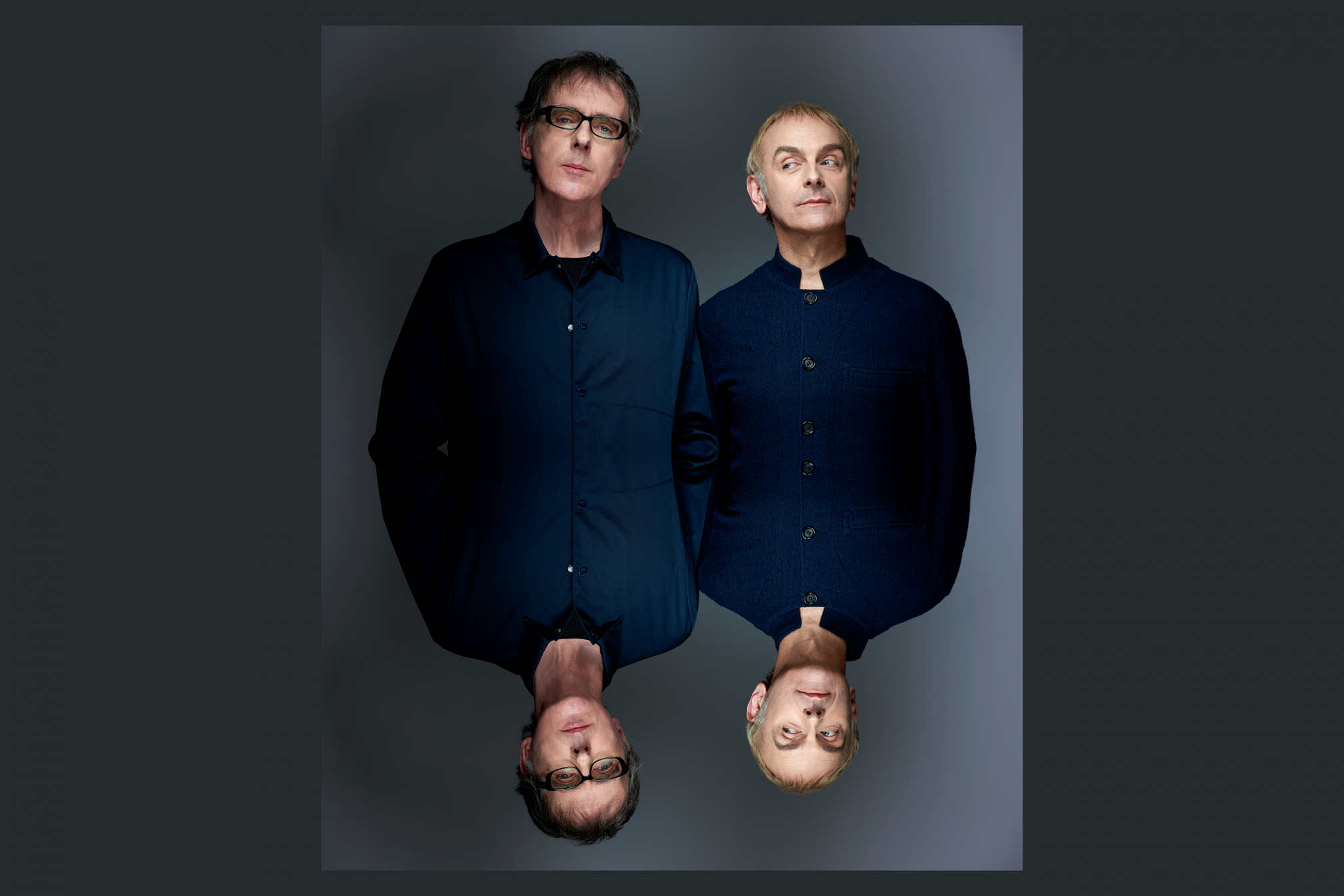
A major offering of DRIFT really showcases your freedom of innovation in the studio, both the tracks themselves as well as the films. While the tracks are supremely well-produced, they also maintain the flowing explorations of a jam setting. How central is a love for live instrumentation and lyricism to your production process?
Rick - They’re like twins. You know? The studio is the studio. I love the studio, I love spending time with technology and sound. I love the peace and process of it all.
But live, once you’ve paired this ridiculous amount of tech, to go and do live techno, it is absolutely about the relationship with people. And the moments. The moments of microseconds. It’s just so exciting… It’s like theater, isn’t it? It’s like theater as a communication with people. You’ve put in the music you authored, and written, and molded... and now you’re playing it for people. And you’re venting it through live instrumentation.
Our show is pretty upbeat, uplifting and full of energy. That’s often because of when we’re asked to play. We play the 10 PM slot, midnight, two in the morning… and we have our hour and a half. It’s not like somebody’s constantly asking us to play for 12 hours, so that creates options [to focus our live sets].
Read more here: Sven Väth and Underworld want to play a 12-hour back-to-back set
Karl - There’s no way to truly know this, but I assume the music we wrote for and released with ‘DRIFT Series 1’ would have been different had we not been out on the road, at the same time. I think that we experienced that, on the road. If reading [the crowd] wasn’t a conscious part, it was certainly a subconsciously part of our thinking, when we were making music. Not that we were aiming to write everything to sound like we could play it live. But there are lots of tracks that we could play in a live show. Certainly more on this than any other release we’ve had.
What was also interesting was playing a series. We had 4 shows at the Sydney Opera House, playing four shows back-to-back. So we were able to create four different shows, sometimes performing or comprising music that had only been produced and released a week before. And people knew it! That’s unique, as people don’t often think of releasing in this way. We weren’t waiting for [our music] to gradually seep into the culture. Everyone’s got it, and 24-hours later we could drop that tune and people would know it.
In what ways does DRIFT challenge or evolve the fairly entrenched norms within the industry, regarding music production and label releases?
Karl - With the ‘Series 1’ idea, Rick often refers to Netflix as an inspiration, and the notion that you can dip into a series at any point and engage with it, and then go back to the beginning. You could’ve missed the beginning and still pick up on it, and get into the whole thing. Whereas an album, a traditional album, is a one shot. But a TV series, it’s a whole extended period of time.
Rick - [DRIFT] feels like a flow. The old style, for us in our approach now, these older albums feel sculptural. You sit there and build them, and put it there, and then you wait… forever, for it to come out. It’s object oriented. We’re flow orientated with this. I don’t have a major message for people, I just hope people like some of what we’ve done. It’s very eclectic. It’s quite a mix of stuff. Sure, it’s not going to be everyone’s taste, but had great feedback from friends and DJs on the most unusual material. Not what you’d predict, like “Obviously, they’ll choose the banging techno one”, but you’d be surprised.
Karl - It’s been a much broader range of people engaging with this music. Even DJs who wouldn’t have picked it up in the past, because we covered such a wide landscape with lots of openings for different takes.
Rick - For example, we're playing ‘Border Factory’, the track we wrote with Ø [Phase], with Ashley, and we were playing that back in November-December of last year.
Read more here: Exclusive: Underworld's new collab with Ø [Phase] is some of their most daring work to date
Karl - And that [track] didn’t get released until way into the [2019]. People were picking up on that on their recorders and cellphones and posting it. That was another way in which the medium of our releases helped people to meet us in the middle. It was an empowering system for putting our music out and communicating with the global community. It meant that we could speak directly with first hand dialogue to the global community, rather than going through different channels to translate what we’re doing. Or even scheduling to release our material. So it was very much like ‘Riverrun’, in that fashion.
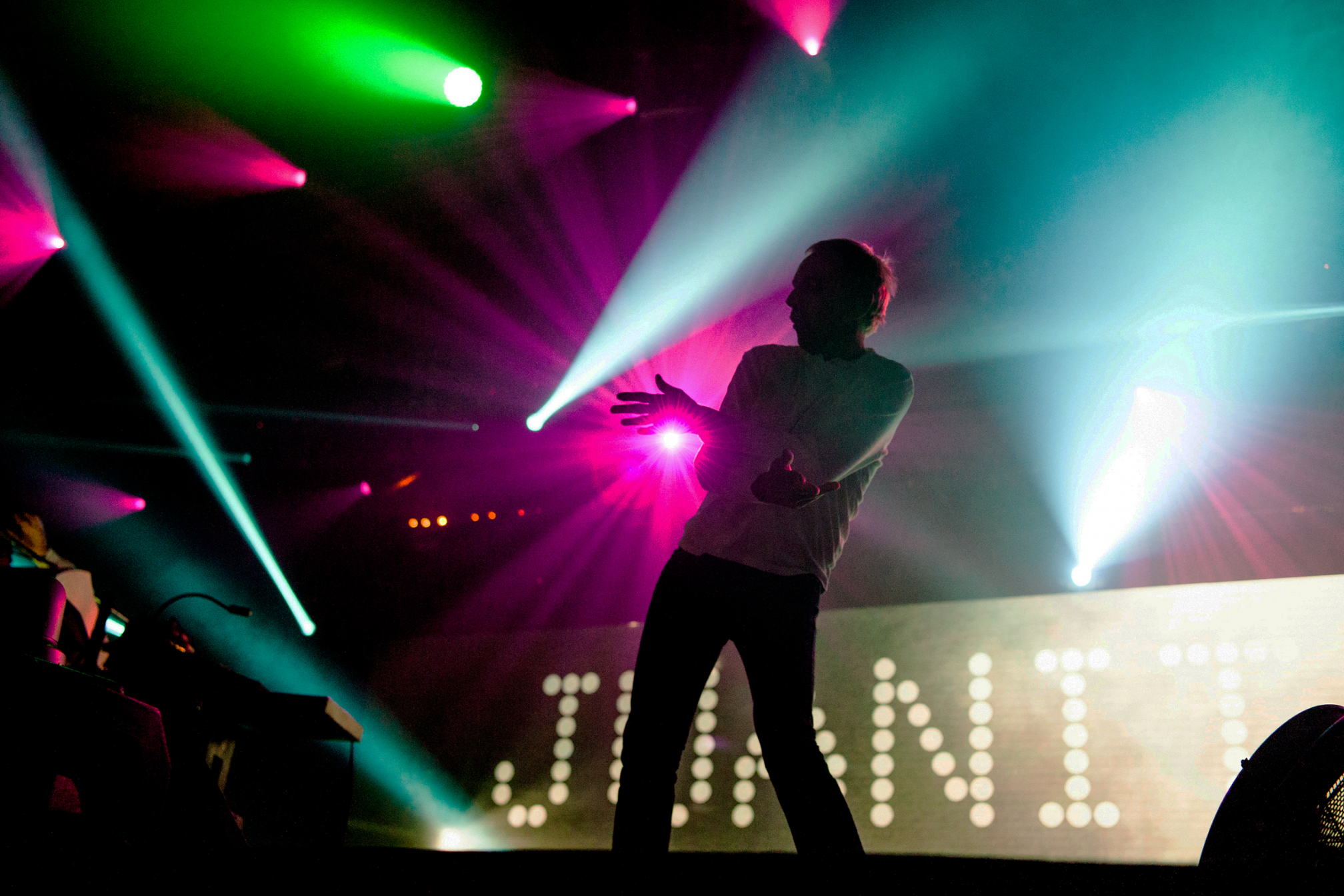
Tomato’s Simon Taylor has been with you guys since the beginning at Glastonbury’s Soundfield, and before then even. How has your artistic friendship evolved over the years, and what is the most rewarding aspect of such a long-standing collaboration between your sights and sounds?
Rick - Oh my goodness, huge! The weight he took upon his shoulders, in terms of the visual material, is enormous. I know it’s been a journey for him as well. The pace of this, the nature of the releases.
Karl - He embraced it as an artist, the challenge. Working in a very different way to the way he’s worked for the past 30 years, really. Or the way people would ask him to work. [Taylor] would have a brief, then put in his pitch, and know what he was making, he’d work through it and deliver results. Quite often, things would change overnight [with DRIFT], and he’d have to come up with a completely different film within hours, which is not normal for the way he traditionally worked, and he rose to the challenge every time.
Rick - It worked two ways. When you have two disciplines - music and film - and they’re not conceived or planned at the same time, like a narrative, then it’s a challenge. Well, it was a challenge for me sometimes... because I had to acknowledge he had things going on - travel, and road trips, and things to do. So there were times he was really pushing to try and pin us down - but not in a bad way! He was just trying to stay on top, because he was worried he wouldn’t be able to if I kept changing things… if there was no plan, or if I just didn’t know the path yet. So it was an interesting dynamic and equally challenging.
Karl - The nature of films were different than traditional music video, with a shot list and a huge budget. These were made not on a massive budget, but they had to look great and reflect Simon’s skills and style. So he was working every week, watching our vision to produce the films very fast. We had no idea this body of work, this thirty or forty films, would become things in themselves. Like moving paintings, seeing them all as one body and they became something else.
Rick - They’re all playing at once!
Read more here: Underworld's new music is a colourful 'Mole Hill'
Having completed ‘Series 1’ of the DRIFT project, with its full cumulative release due out this week - and waking up with that “Ah hah!” moment this morning - what are you most excited for moving forward?
Karl - One really great thing about DRIFT, is that it’s current. Unlike an album, which is delivered months ahead, and written months or years before that even, this material can respond to the week that came previous to it. It can respond in the moment to what we’re listening to and hearing right then, in that week. It’s something we’ve never been able to do... at least since releasing 12 inches back in the early-90s.
So we’re most excited for ‘Series 2’! Considering what we’ve learned from this, where will it take us, how will we not do things the same, how will we learn from our mistakes, to build on what we like and continue the things that we enjoy. Oh, and sleep.
Rick - I’m very excited for the shows that we have coming up right in front of us. I know Karl is as well. So those are immediate things that make me think of excitement. And I absolutely agree with Karl. I’m also excited for ‘Series 2’, and the evolution of what we’ll pick up and what we’ll leave behind. A friend of ours who shared a thought during DRIFT, inspired by listening to one of the pieces, said, “Music is never finished, it just gets ready.” That’s been a little phrase that’s resonated as much as the word drift did for us, at the beginning. At least for me.
Karl - Yea - things can evolve, it’s not fixed. And one of the things that’s come out of this project, is that things have been released digitally, as they come out sequentially. Rick has reworked and moved on the material, so the box set album - all the music on that is a progression from where it initially came out.
Rick - In some ways, DRIFT... ‘Series 1’ and ‘Series 2’, has often helped us focus; perhaps often things that we’ve done for half a lifetime. It does focus our attention. For most of Underworld’s existence since the 90s, I’ve worked on reinventing album material as the basis for playing live. When we play together, that’s what we’ve done traditionally, is improvise. What DRIFT does is bring us more into that world, in terms of the recordings… We are generally not sure what’s what, and I believe that phrase is right - that “music is never finished.” So who knows how we will look again and what we’ll take on. It’s a journey with no map.
The ‘DRIFT Series 1’ record and box set will be available for purchase on Underworld’s website November 1st. Click here to pre-order.
Read more here: Get the best of Mixmag direct to your DMs
Ryan Baesemann is a freelance journalist and Editorial Contributor to Mixmag. Follow him on Twitter.



